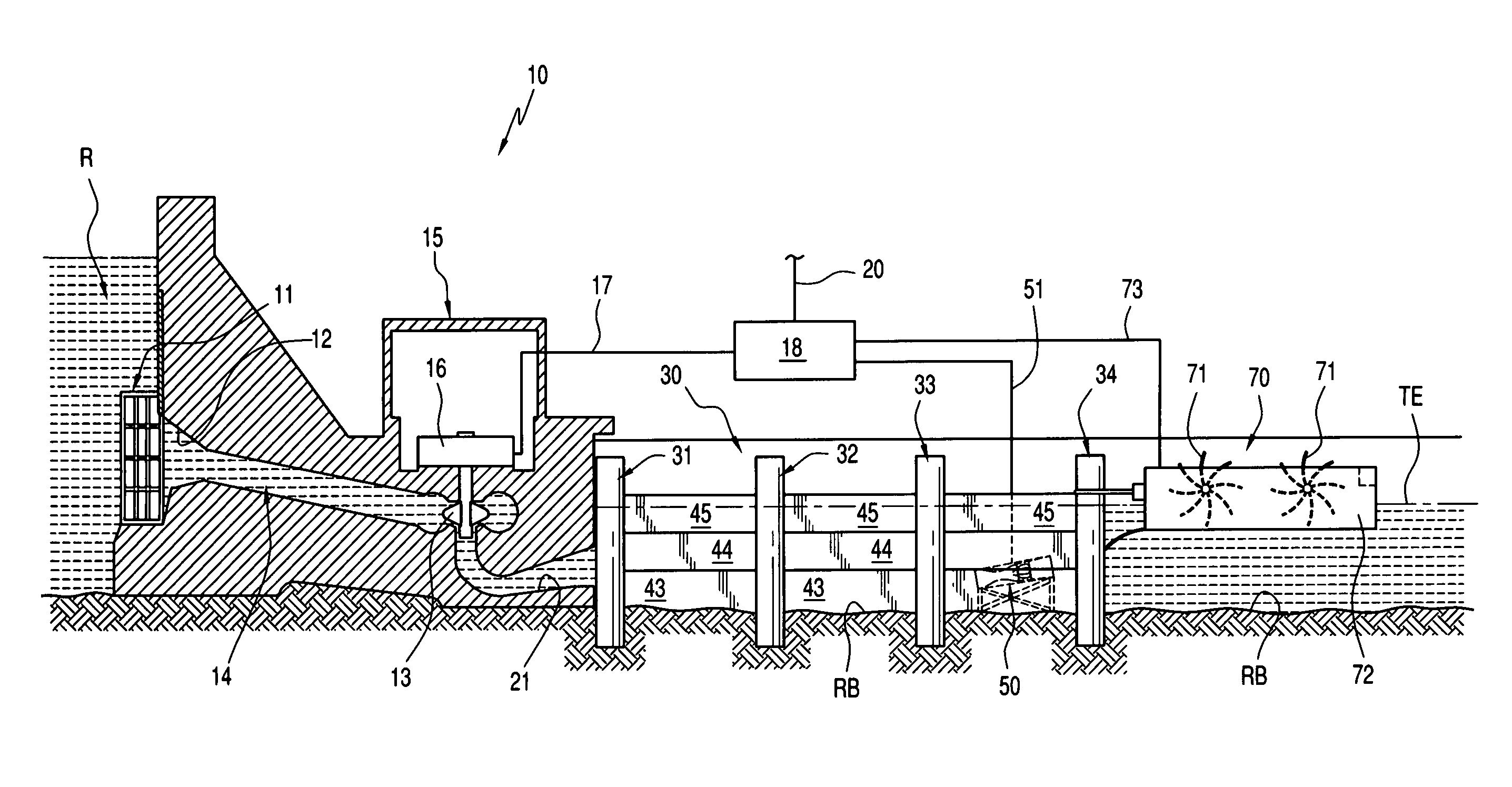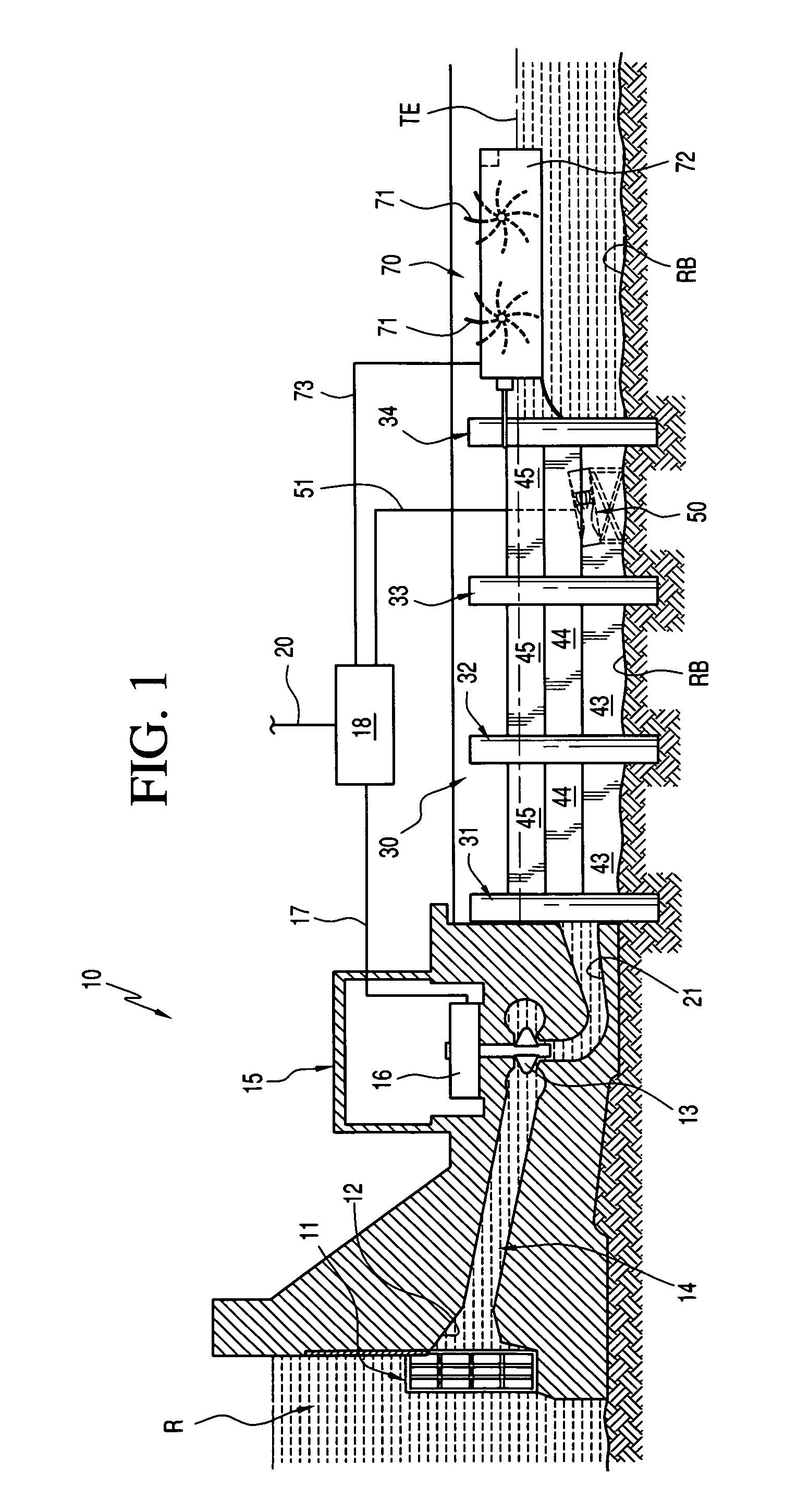Apparatus for hydroelectric power production expansion
a technology of hydroelectric power and apparatus, applied in the direction of machines/engines, renewable energy generation, greenhouse gas reduction, etc., can solve the problem of ineffective spin turbines, achieve the effect of minimizing life-cycle costs, minimizing tailwater elevation, and minimizing power production
- Summary
- Abstract
- Description
- Claims
- Application Information
AI Technical Summary
Benefits of technology
Problems solved by technology
Method used
Image
Examples
Embodiment Construction
[0022]A conventional hydroelectric dam 10 (FIG. 1) generates electricity through the utilization of water head of its reservoir R. The hydroelectric dam 10 and its associated powerhouse 15 contain from one to several bays per turbine 13. Each bay contains the following elements in various numbers and configurations: trash rack 11, fish screen (not shown), gated intake 12, and penstock 14, which together control and transfer water flow through the turbine 13 to generate torque that transfers to a generator 16 whose electricity is transmitted by power lines 17 to a power system 18 and from the latter via power lines 20 to sources of utilization. Many dams use multiple intakes 12 and draft tube outlets 21 for each turbine 13 which pass water emerging from the draft tube outlets 21 which is free of debris but its roiling and churning condition renders it unsuitable as a turbine driving power source. Therefore, one the major challenge to utilize tailrace water exiting draft tube outlets ...
PUM
 Login to View More
Login to View More Abstract
Description
Claims
Application Information
 Login to View More
Login to View More - R&D
- Intellectual Property
- Life Sciences
- Materials
- Tech Scout
- Unparalleled Data Quality
- Higher Quality Content
- 60% Fewer Hallucinations
Browse by: Latest US Patents, China's latest patents, Technical Efficacy Thesaurus, Application Domain, Technology Topic, Popular Technical Reports.
© 2025 PatSnap. All rights reserved.Legal|Privacy policy|Modern Slavery Act Transparency Statement|Sitemap|About US| Contact US: help@patsnap.com



